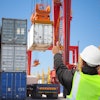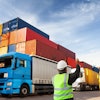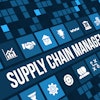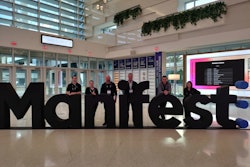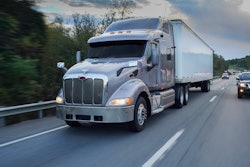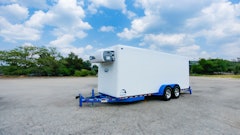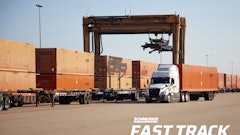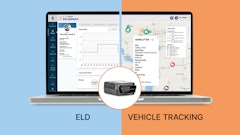
Real-time visibility in the food and beverage supply chain is always important. However, during peak holiday times it takes on increased importance as shippers try to meet customer demand. In addition, todays’ customers have become more demanding about having visibility to when things are going to arrive at the warehouse or store.
While trucking companies try their best for seamless delivery of food and beverage items, there are times when the transportation function is not the most efficient — often through no fault of the driver. When these hiccups occur, technology and visibility become hugely important in ensuring goods get delivered to meet consumers’ needs.
Prior to the advent of GPS, delivery dates were harder to predict and were determined using some very basic math that factored in how far the load needed to travel and the average speed of the truck. Warehouses and grocery stores had set delivery dates that carriers attempted to meet but it was difficult to determine the exact time a truck would arrive at the dock.
Today’s tracking allows the fleet manager to see exactly where the truck is but also provides visibility into the driver’s log in real time. Companies can see when drivers are nearing the end of their Hours of Service and need to take their breaks before they can resume driving. This means the ETAs to customers are more defined.
Having visibility from the time a load leaves the shipper until it arrives at its destination also allows for recovery plans to be made in real time in the event an accident or breakdown is going to delay the shipment.
Technology can also be used to monitor the temperature of the load to ensure it meets the requirements of the Food Safety Modernization Act. Technology allows temperature parameters to be set. For example, operators can set the temperature parameter of a trailer to be between 32-36°F. If the temperature inside that trailer goes outside of those parameters, it sends an alert telling the trailer is out of spec. Drivers can then respond quickly to find the source of the problem and correct it. That is vitally important when you consider the cost of some loads. Produce loads range from $60,000-70,000 and seafood loads can be worth upwards of $100,000.
And while technology has been a boon to shippers, carriers and receivers, technology by itself is not enough to ensure on-time and safe deliveries. Ongoing communication is the other key element in the food supply chain. When problems occur, it is important to notify the customer as quickly as possible to share with them the recovery plan for that particular load. That plan could be to send another driver, switch to another tractor, or even transfer the load to another trailer.
Technology is a tool that provides large amounts of data, but it’s easy to get overwhelmed. That is why it is important to have someone who can understand and analyze the data to determine what is important and what needs to be communicated to the customer. Then the customer can be informed of the problem but also be reassured that a plan is already in place to rectify the situation so the load can continue to its final destination.
Combining technology and communication ensures the safe, efficient delivery of the nation’s food supply.


